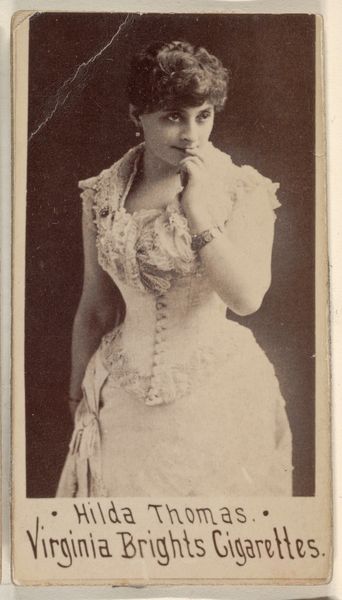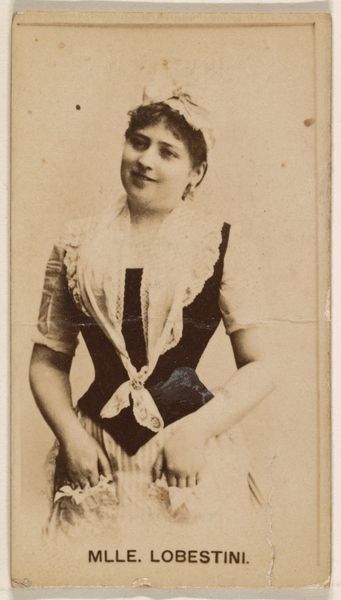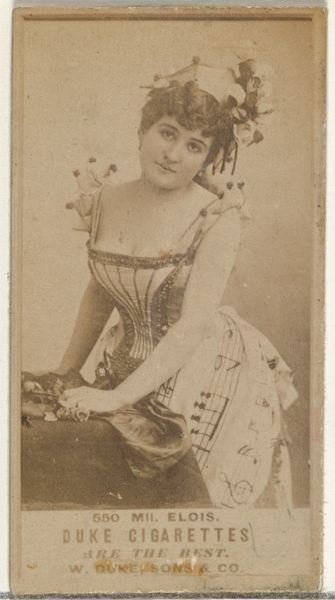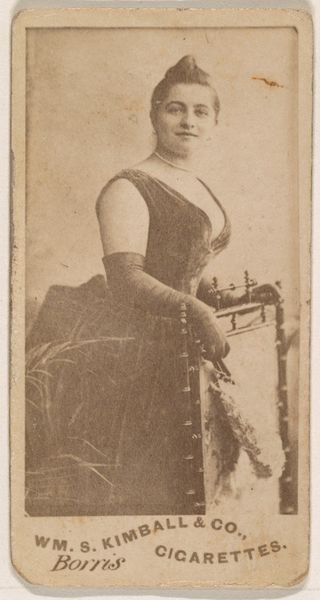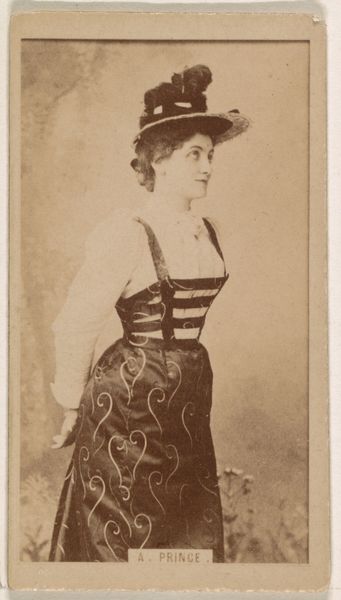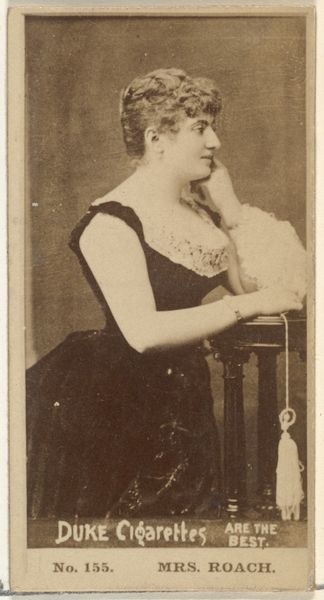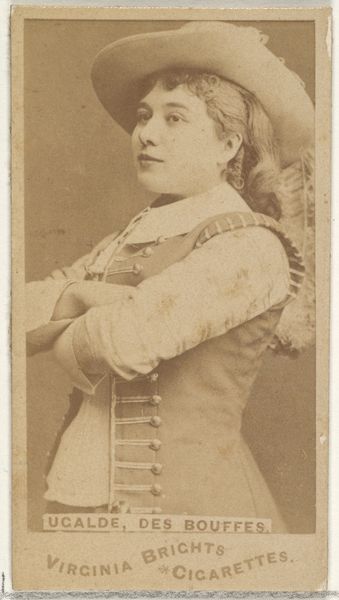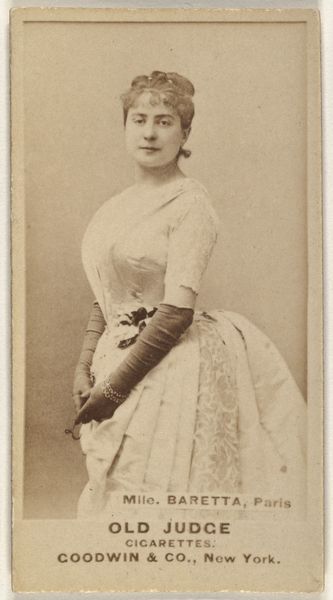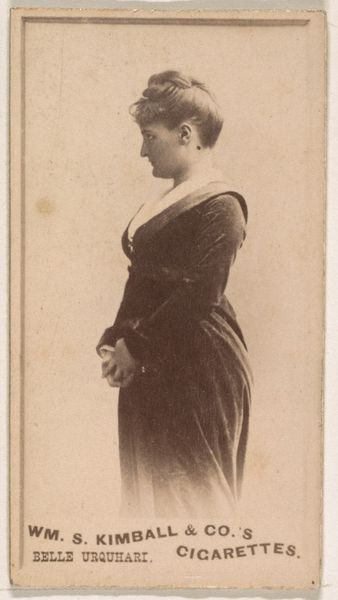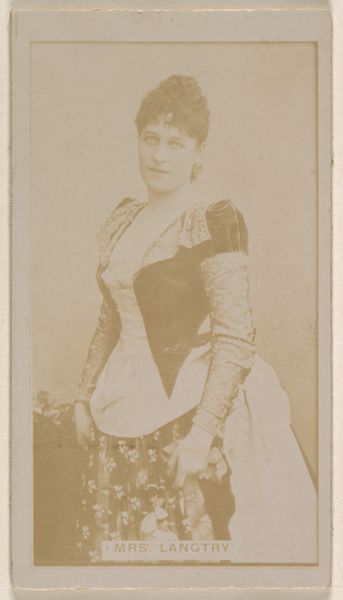
Mlle. Peise de Beaute, from the Actors and Actresses series (N45, Type 7) for Dixie Cigarettes 1885 - 1891
0:00
0:00
drawing, print, photography
#
portrait
#
drawing
# print
#
figuration
#
photography
Dimensions: Sheet: 2 5/8 x 1 1/2 in. (6.6 x 3.8 cm)
Copyright: Public Domain
Curator: The work before us is a portrait, part of the Actors and Actresses series, produced by Allen & Ginter between 1885 and 1891. It's titled "Mlle. Peise de Beaute" and was used to promote Dixie Cigarettes. Editor: It's small, postcard-sized really, and rendered in soft sepia tones. There's a remarkable stillness; the way light catches the ruffled lace at her collar is just superb. Curator: Indeed. It is photography reproduced as a print, part of a larger cultural phenomenon where actresses became highly marketable commodities. The portrait represents Mlle. Peise de Beaute, a figure embedded within the burgeoning celebrity culture and commercial world of the late 19th century. Consider how tobacco companies actively participated in constructing and disseminating images of idealized womanhood to mass audiences. Editor: Looking closely, there's such precise arrangement within this small frame. Her hair, loosely braided and adorned with a white flower, frames her face. Her gaze is averted, yet direct. Curator: And let’s not forget the text, it serves to highlight the interconnectedness of representation, consumption and desire. The commercial element underscores the inherently performative nature of identity—even "beauty" could be bought and sold in that period. How do we reconcile that within conversations about body image today? Editor: The tonal gradations achieved, despite the medium’s constraints, create a convincing depth, but it also presents this idea of the artifice of it all. It reminds me of photographic realism employed by Nadar, for example, but here it is more decorative, somehow. Curator: It encapsulates a moment of significant societal shifts, highlighting the evolving roles of women in public life, their relationship to capitalist markets, and the subtle yet pervasive strategies used in early advertising to shape norms around beauty and desire. Editor: It seems that this close visual analysis helps us perceive the artistic intention but also helps us be more aware of the impact, isn't it? Curator: Yes. By examining such an accessible and unpretentious work of art from a bygone era, we can actually unravel a lot about how those images and cultural values continue to be shaped in today's media landscape.
Comments
No comments
Be the first to comment and join the conversation on the ultimate creative platform.

